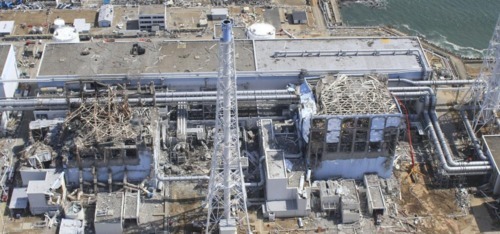
Yesterday UCS released its report U.S. Nuclear Power Safety One Year After Fukushima, written by Dave Lochbaum and Ed Lyman. It assesses how the Nuclear Regulatory Commission (NRC) and US nuclear industry are responding to the nuclear accident that occurred in Japan on March 11 of last year.
The report points out that this is not an academic exercise since the designs of the Fukushima reactors are similar to many US reactors, and US reactors are also vulnerable to natural disasters or a terrorist attack. The Japanese accident exposed several safety shortcomings that could also affect US reactors.
To its credit, soon after the accident, the NRC set up a task force to review the accident and identify measures to reduce vulnerabilities at US reactors. The task force presented 12 recommendations in July 2011.
Its first recommendation was to clarify the current patchwork of regulatory requirements governing “beyond-design-basis” accidents—that is, accidents more severe than the reactor is designed to withstand. Currently, the NRC regulations governing such accidents are fragmented and uneven—there are some NRC requirements that apply to some types of beyond-design-basis events, but not others. The task force considered this the most important recommendation because it provides a necessary foundation for its other 11.
The NRC later placed all but the first recommendation into three categories of priority:
- Tier 1 items, which are expected to be handled largely by means of orders issued to plant owners before the first anniversary of the accident, although the plants would not have to fully implement the changes for nearly five years;
- Tier 2 items, to be addressed through rulemaking within five years of the accident; and
- Tier 3 items, to be dealt with through means and a schedule to be outlined by September 2012.
However, the NRC decided to move the task force’s top recommendation to the bottom of its priority list—below even Tier 3. Dave and Ed note that this decision “will likely only add more patches to the existing patchwork” and make it harder to implement the other recommendations consistently across all U.S. reactors.
The nuclear industry is responding to Fukushima by proposing the Diverse and Flexible Coping Capability program, or FLEX, under which plant owners are beginning to buy new emergency equipment, ostensibly to better respond to severe natural disasters. Plant owners are dispersing it in numerous locations on and near reactor sites, but are not planning to harden it against natural disasters. The industry is banking on there being enough equipment available so that at least some of it would be usable in the event of an emergency.
But since there are no NRC guidelines yet for what equipment is needed or how it should be protected, this may not ultimately be an effective response if there is an emergency. This may be a case of the industry tail wagging the NRC dog—hopefully the NRC will not be deterred from requiring hardened equipment if that is what its analysis shows is needed to provide adequate protection.
UCS released its own recommendations for improving reactor safety and protecting the public last July. Three of them—enlargement of emergency evacuation zones, expansion of potassium iodide distribution, and accelerated transfer of spent fuel from pools to dry casks—were later chosen by the NRC staff for further evaluation. However, the NRC placed these recommendations into the Tier 3 category, deferring action for an as-yet-unspecified period of time.
Dave and Ed also have an op-ed on CNN.com.
